| Umělec 2007/3 >> Outline of the Czech Art History I. Period of Greatest Importance (1960-1989) | Просмотр всех номеров | ||||||||||||
|
|||||||||||||
Outline of the Czech Art History I. Period of Greatest Importance (1960-1989)Umělec 2007/301.03.2007 Tomáš Pospiszyl | footnotes | en cs de es |
|||||||||||||
|
BRUSSELS
By the end of the 1950s, it was clear that Czechoslovak Socialist Realism had never existed. Between the wars, emerging art became increasingly transparent in its indebtedness to the Avant-Garde and its ideals of building new culture and society. The movement far outlived the original concept, with the processes lasting much longer than naive contributors to inter-war cosmopolitan magazines could have imagined. Economic and ideological crises of capitalism, manifested in the collective consciousness, were slowly blunted by round-cornered furniture and the organic abstraction of decorative fabrics. Czech society entered the Sixties in modernindustrial look. There was never a better time for modern art—the Avant-Garde was both popularized and inducted into folklore. KAREL TEIGE It was Karel Teige, who (not without a certain amount of embarrassment) became the ideological leader of the modern art rehabilitation process in Czechoslovakia. His humiliating self-flagellation and failed proposal to erect a monument to Stalin on Letná, Prague, were still well remembered by those comprising the cultural front. Ultimately, it was long-standing respect towards Teige and his unchallenged contribution to prewar theoretical work in forming Czech art that redeemed Teige. His reputation was rehabilitated, and his organizational skills enabled the Czechoslovak building industry to be more scientific and liberal. GENRES Most impor tant ar t forms in the new Czechoslovakia were architecture, film, and furniture making. Architecture formed people’s lives on a non-class basis. Towns newly built had rational plans that harmonized economic, transportation, recreational and aesthetic needs. Old towns were reconfigured to meet new demands: paved streets were substituted with smoother asphalt roads, services were centralized and streamlined, suburbs were converted into nursery and kindergarten districts. Special laws protected historical and natural heritage. The new world filled films with previously unseen images, stories, and emotion— gave people solutions to their problems, it agitated, praised, criticized, teased—and embodied dreams. Comfortable furniture provided rest after work. ART INFORMEL The realization of Avant-Garde utopia, the vision of which had been briefly identical for both masses and cultural elite, was not the only cultural agenda of the period. There were also several unofficial art streams; Czech art informel did not draw inspiration from the contemporaneous Czechoslovak social situation, but reflected the schools of thought and artistic movements of unrestrained Western civilization. After 1964, the pictures by Antonín Tomalík, Jan Koblasa, Mikuláš Medek, and Jiří Valenta became world-wide sensations and constituted the acknowledged contribution of Czech art to world art in the Seventies. Art Informelt strangely balanced abstraction and figuration. It primarily was characterized by its planarity and denial of space, as if the artists gently sliced at the tissue of the period and presented it to spectators from under a microscope. It was not a nice look. They portrayed biological tissues, veins, scabs and ulcers; however, some critics claimed that the informel artists lacked distance. For the upcoming generation, the unshakeable position of art informel remained an unpleasant and hard-to-overcome generational obstacle for many years. EXPERIMENTAL ART Was there real criticism of social conditions contextualized in art? Pop art (like social realism) had virtually never existed in Czechoslovakia, since it was not necessary to glorify nor criticize consumerist society. Revisionism, famous in the period literature and film, had never appeared in Czech fine art of the late Sixties either. The art of the time remained mainly apolitical— nobody appealed for new post-war development assessments, nobody invited back pastors or Germans. Still, the late Sixties saw the emergence of a certain skepticism and disillusionment from existing trends. Thus Jiří Kolář, Josef Hiršal, Bohumila Grögerová and others concluded: “If social experiment does not work, let us experiment with artistic form.” They began active communication with foreigners, in whom they found (at least from domestic point of view) significant support. Instead of embarking on a traditional Avant-Garde program to change society and art, experimental art shifted its aims to two different, yet relating, schools: 1. Extended formal experiments with the language of art. 2. Self-affirming search, following trends in Western art. GENRES By the end of the 1960s, the main art genres were established: experimental poetry, action art, and utopian architecture. Unsuccessful poets and similarly undecided fine artists could assert themselves in the field of experimental poetry. Action art, immensely flourishing in Czechoslovakia, adhered to the promotions of certain social goals. Happenings were at first performed by Milan Knížák, then by Eugen Brikcius. The form of action art can be traced in some projects of Vladimír Boudník, whose works produced in the late 40s-early 50s were “discovered” with a fifteen-year delay. Utopian architecture proved advantageous in its forgiveness— problems arising from the realization and embodiment of the work did not matter. Conceptual art was exhibited by Jindřich Chalupecký in Prague’s Špála gallery on Narodní třída and exchanged by artists among each other via post. However, no documentation was preserved, because the artists did not desire it. OCCUPATION Nobody wished for the occupation of Czechoslovakia in 1968. NORMALIZATION In the Seventies, the inspiration of Czech artists arose from personal tragedies and collaborative projects. Vladimír Boudník began painting and realizing his architectural designs; this reversal was obviously provoked by long-term denial of his work by the domestic art milieu. His entrance to Svaz výtvarných umělců (Union of Fine Artists) and official commissions were the manifestations of official recognition. He worked in public spaces, with the general public, and advocated an art movement he created and called Explosionism. It was clear, however, that the numerous decorative prints of antiwar motifs he designed for company canteens and swimming pools were a waste of his talent. GROTESQUENESS The grotesqueness and self-destruction movements were two extensive reactions to the occupation in 1968. Many personalities stopped making art and began to pass off their understandable lapse into alcoholism and mental decay as their work. In some regions, remainders of this trend have survived until today. So-called “Czech Grotesque” is sometimes jokingly combined with self-destruction, as in the works of Karel Nepraš and Jiří Sopko. AVANT-GARDE TRIAL In 1972, Jan Kotík founded an unofficial art academy in Vinohrady, Prague, which remained open despite several police attempts to halt its operations. In 1974, the academy hosted a critical discussion, one which helped to formulate attitudes of the incoming artistic generation. Kotík’s “Avant-Garde Trial” settled accounts with inter-war Avant-Garde ideals and allowed for the creation a n d d ev e l o p - ment of individual art m o v e m e n t s i n d e p e n d e n t o f artists’ political or social responsibilities. Older generations, including Kotík’s, interpreted these results as treachery. The social context played an important role too—at the end of the Seventies, despite the liberalization of Husák in eastern modern-day Slovakia, Czechoslovakia was still a part of the Communistic Block. Censorship, however, affected only extremely anti-Communistic or completely incomprehensible actions. Similar to Yugoslavia, Czech artists enjoyed a relatively free status. Although under surveillance, they started traveling abroad and were able to become members of the international art exchange. MEDEK, KNÍŽÁK, PERFORMERS The early Surrealist work of Miluláš Medek was valorized by the exhibition at the Prague City Gallery in 1975, and was increasingly recognized in textbooks and encyclopedias. Medek became provocative after he started to combine automatism with abstraction, and when the subject-matter of his works were his own paintings. He favored geometrical abstraction in the late Seventies, whereas in the Eighties he focused on space constructions, large sculpture-architectural temples of strong symbolic significance. In 1968, the main representative of Czechoslovakian action art, Milan Knížák, left for the United States. He participated in the international, intermedia Fluxus movement, and from 1973 he settled permanently in California. From 1983 to 1987 he lectured at the University of California in Santa Barbara, and devoted himself largely to painting, a passion which he never abandoned throughout his later career. Since 1993, Knížák has lived in Prague. Performance art was represented notably by Karel Miler, Petr Štembera, and Jan Mlčoch. Their works balanced between the biological reflections of C. G. Jung, anonymous skullduggery, and metaphorical gymnastics. Jiří Kovanda watched this group of artists from a distance. By imitating his colleagues’ works, his own work unintentionally reached a greater level of depth, which later warranted distinction. After 1980, Mlčoch, Štembera, and Mlčoch continued their action art in radically changed conditions—increasing popularity of their performances engendered a disturbing environment. POSTMODERNISM The mid-1980s were marked by the reappearance of a half-forgotten sculptor, Mára, who was commissioned to create a monument to a Russian general, but the sculpture was commonly acknowledged as a work protesting the social situation of the time. Of greatest importance to Mára was his inner freedom, in the name of which he was capable of sacrificing his work. He is one of the few artists of his generation to live to see not only a large body of theoretical reflection on his work, but general popularity as well. In 1987, an artistic group called Tvrdohlaví was founded by the youngest generation of artists. Manifesto performances from female artists, who were able to study at VŠUP and AVU in the late eighties, meant not only the approval of new art groups, but also signified the delayed arrival of postmodernism – presented chiefly by the interest in language, myth, fairy-tales, romanticism, scientific drawing, state symbols and social fluidity.
01.03.2007
Рекомендуемые статьи
|
|||||||||||||
|
04.02.2020 10:17
Letošní 50. ročník Art Basel přilákal celkem 93 000 návštěvníků a sběratelů z 80 zemí světa. 290 prémiových galerií představilo umělecká díla od počátku 20. století až po současnost. Hlavní sektor přehlídky, tradičně v prvním patře výstavního prostoru, představil 232 předních galerií z celého světa nabízející umění nejvyšší kvality. Veletrh ukázal vzestupný trend prodeje prostřednictvím galerií jak soukromým sbírkám, tak i institucím. Kromě hlavního veletrhu stály za návštěvu i ty přidružené: Volta, Liste a Photo Basel, k tomu doprovodné programy a výstavy v místních institucích, které kvalitou daleko přesahují hranice města tj. Kunsthalle Basel, Kunstmuseum, Tinguely muzeum nebo Fondation Beyeler.
|







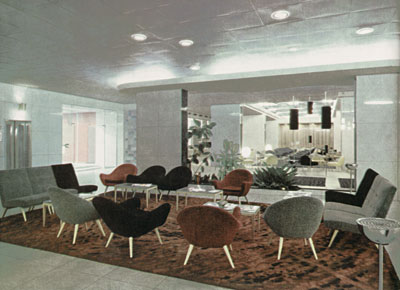
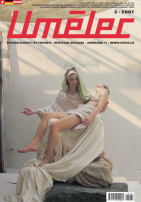



























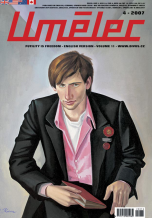
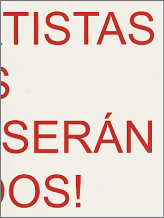
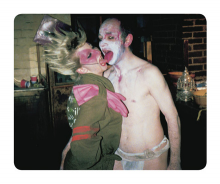


 We Are Rising National Gallery For You! Go to Kyjov by Krásná Lípa no.37.
We Are Rising National Gallery For You! Go to Kyjov by Krásná Lípa no.37.
Комментарии
Статья не была прокомментированаДобавить новый комментарий